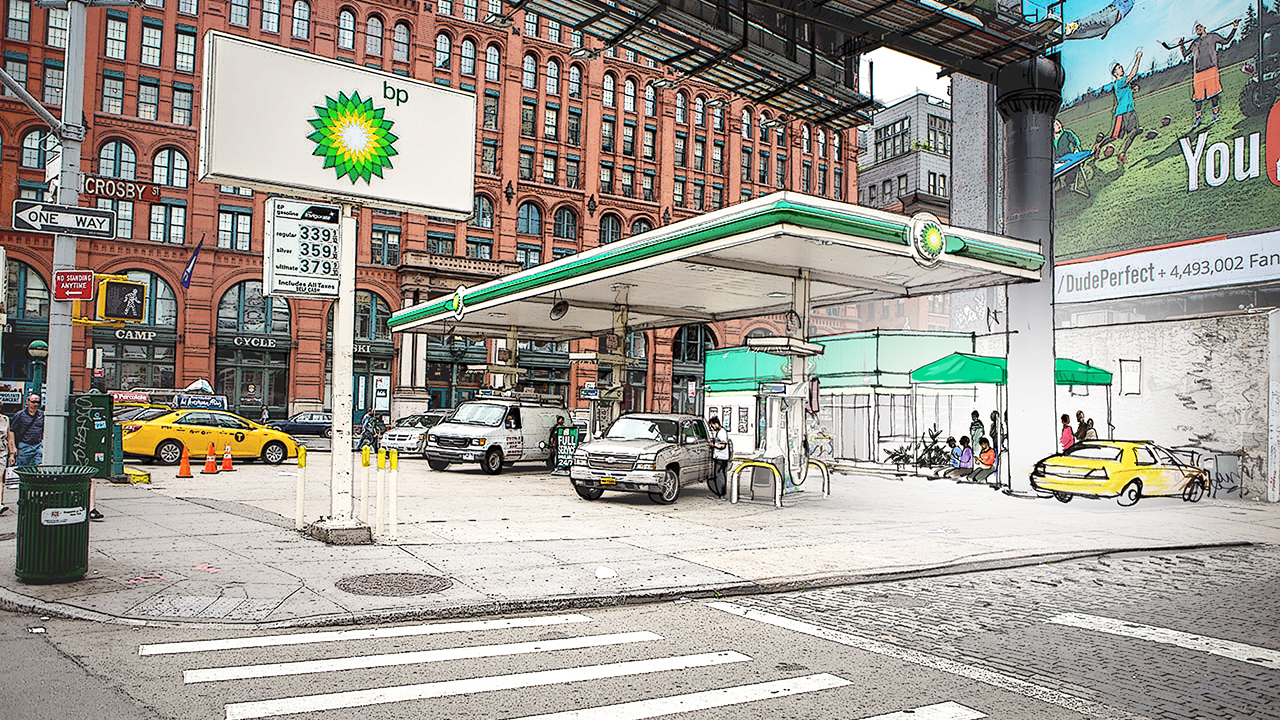About half of New York City’s 50,000 cabbies are Muslim and for many of them, remaining observant isn’t easy in an urban environment where it’s hard enough to find a place to pee, let alone a place to park and pray. Muslims are required to pray five times daily between sunrise and sunset for a religious rite known as salāt. It’s one of the main pillars of Islam and involves performing the sujood, a practice where one gets on their knees and presses their head against the ground. Finding a suitable location to do this while driving a taxi is by no means an easy feat. Each prayer session takes between 5 and 10 minutes and if not done within the specified timetable, it expires.
Since it’s just not possible to seek out a mosque for every prayer, it’s not uncommon to see drivers unfurl prayer rugs at gas stations and use them as temporary sacred spaces. It’s their only real oasis, where they have access to bathroom facilities and water to ritually wash before prayer. ANIMAL decided to take a look at the plausibility of slightly redesigning gas stations with more appropriate and permanent prayer areas, but to do so in a way that would require minimal effort. In many cases, station owners would only have to move vending machines and ice dispensers to accommodate the request. We commissioned visualization artist Shalum Shalumov to redraw the BP on Houston Street, one of Manhattan’s busiest gas stations and a popular makeshift prayer spot for Muslim drivers, and shared those illustrations with an imam and two cabbies.

According to Imam Khalid Latif of the Islamic Center at NYU, a prayer area at a gas station would be permitted as long as certain basic conditions are met. “Technically, Muslims are allowed to pray anywhere that is clean, which is a pretty broad set of guidelines,” he wrote to ANIMAL over email. “Areas that are not clean would include places like bathrooms.” Mitigating the noise would be an important factor for Latif and not only “make the concept stronger,” but also more conducive to creating an alternative place to worship. “Concentration is a key element of a Muslim’s prayer and conceptualizing a person standing in the middle of Manhattan and all of its noise would most probably paint an image filled with distractions.”
“This is a very good idea,” said Mahmood, a cabbie who was parked across the street from the station. He said it would be “useful.” I showed the illustrations to another taxi driver who had just finished praying and was folding up a prayer rug and placing it in a plastic bag that’s left at the station for other drivers. “Allah Akbar (God is great),” said Aminor Rassul, 50. “I appreciate you and I request you do it at JFK too.” He’s referring to JFK Airport’s Central Taxi Hold, a massive parking lot where cabbies congregate and wait to be dispatched. Rassul noted how although there’s a lot of space there, there’s no roof, so lots of drivers are forced to pray in the rain.

Overall, Latif is supportive of the idea and believes it could be beneficial to station owners. “I think in cities such as NYC, any gas station that would set-up a prayer area would probably do well for themselves as the added amenity would yield them more customers,” wrote Latif.
He explained how in Muslim parts of the world, “service areas on highways are built with prayer rooms,” an amenity that may be worth exploring here in the city. “To replicate the model to service this large demographic would make sense for the gas station owner looking to increase sales.”
BP did not comment on the concept.
(Illustrations: Shalum Shalumov)



